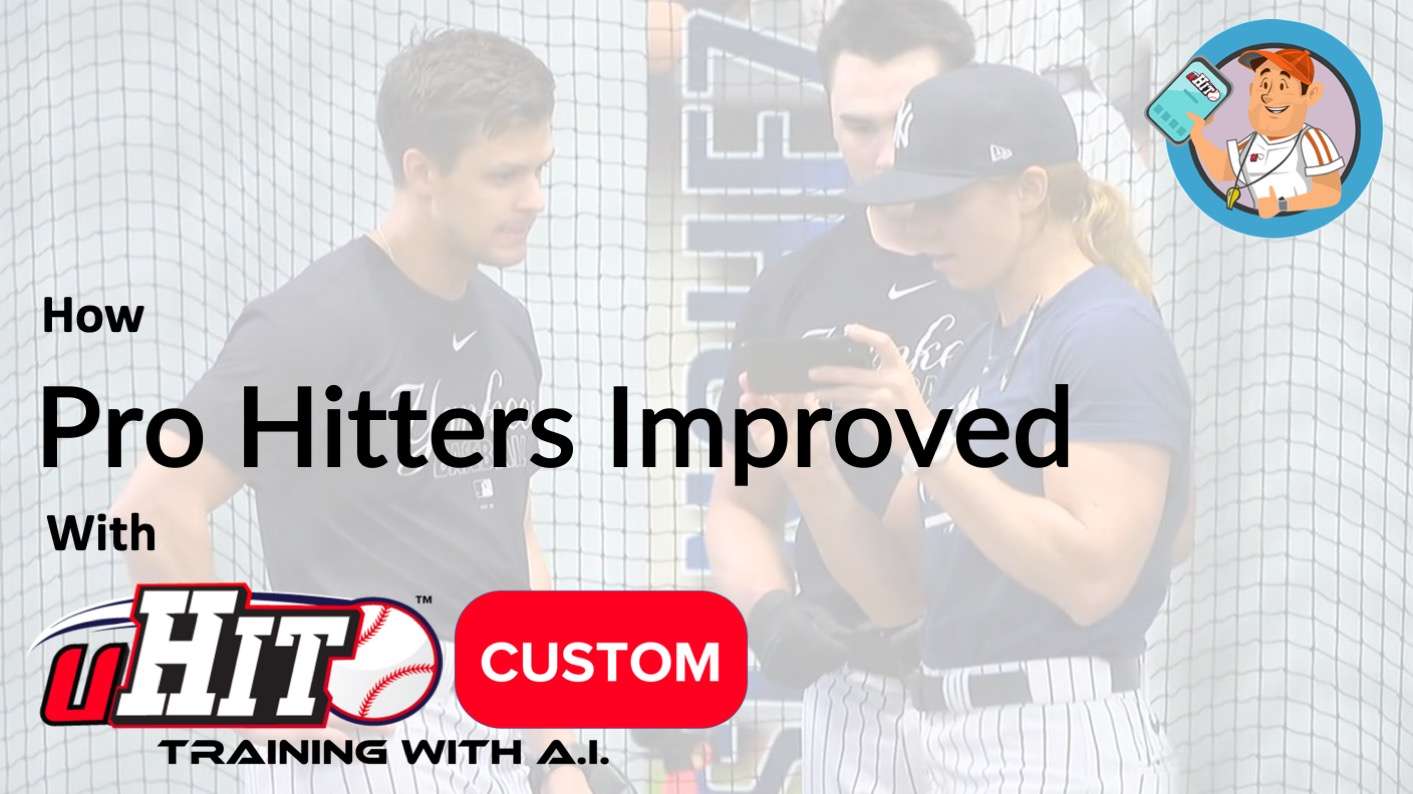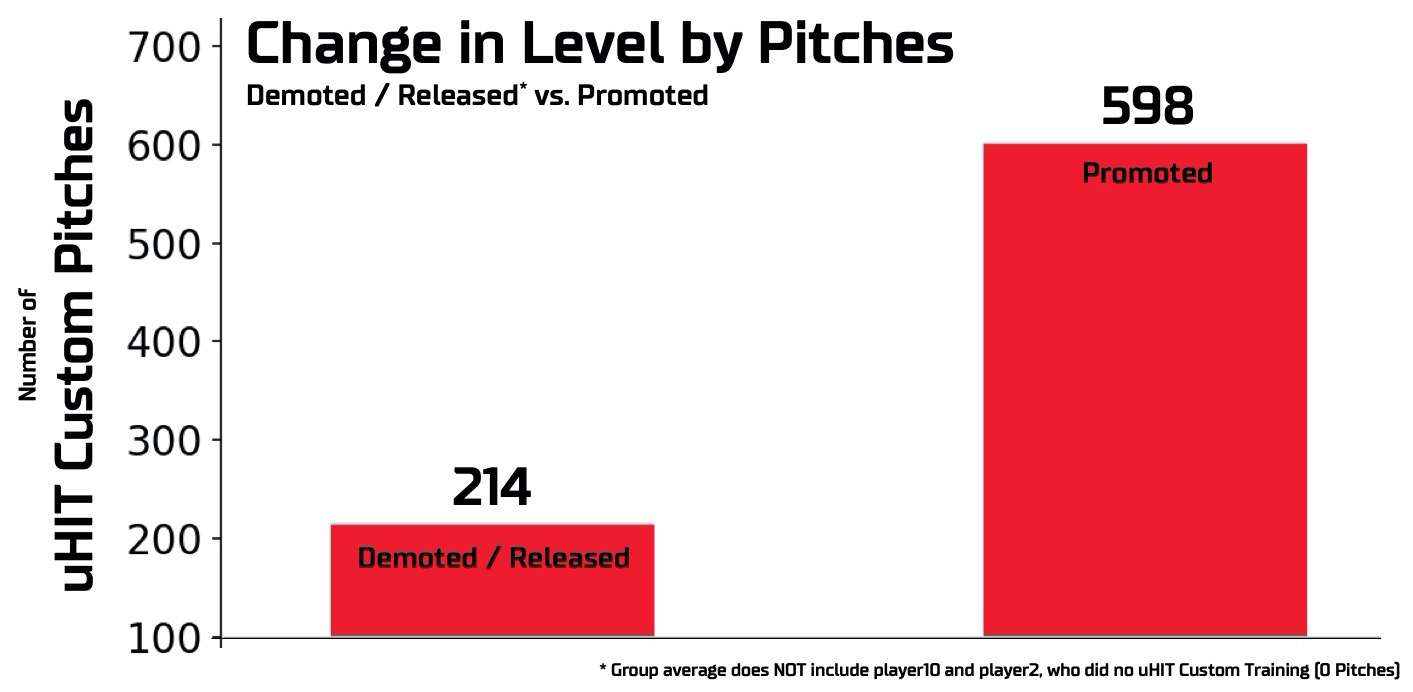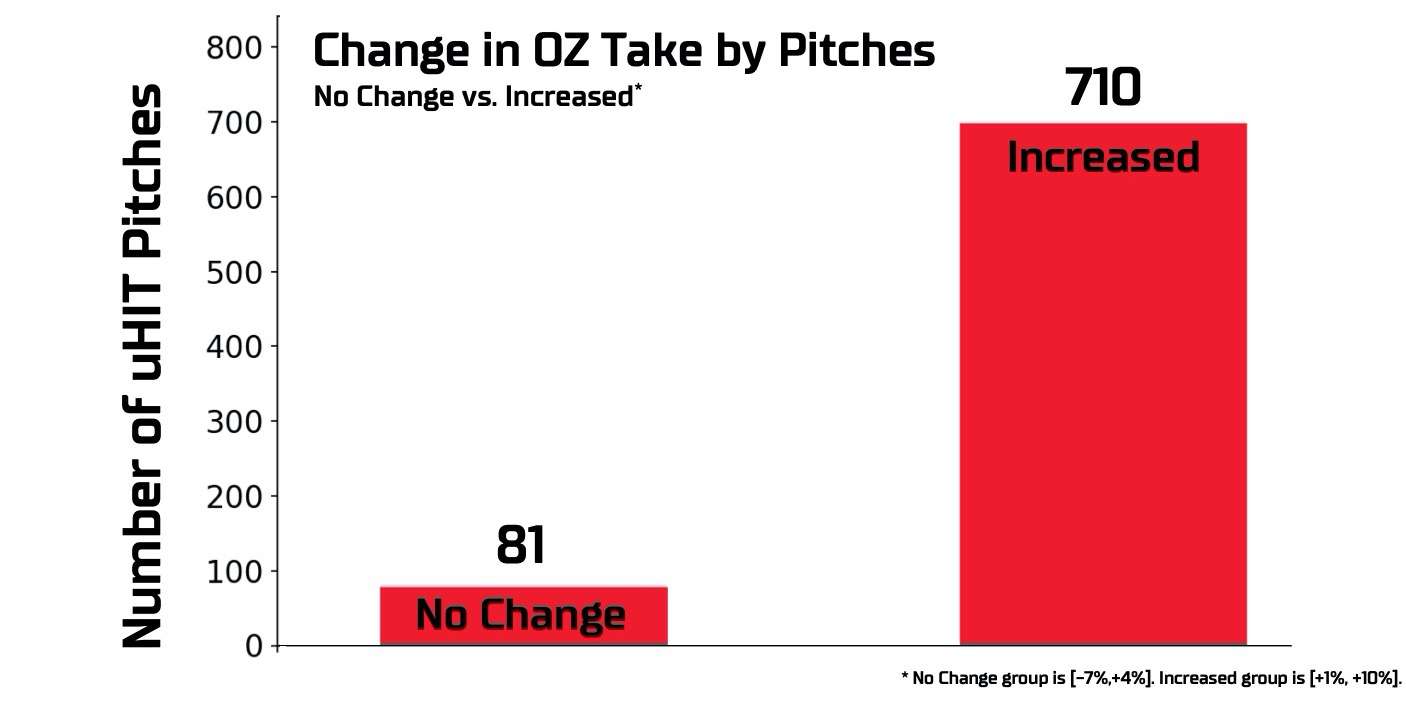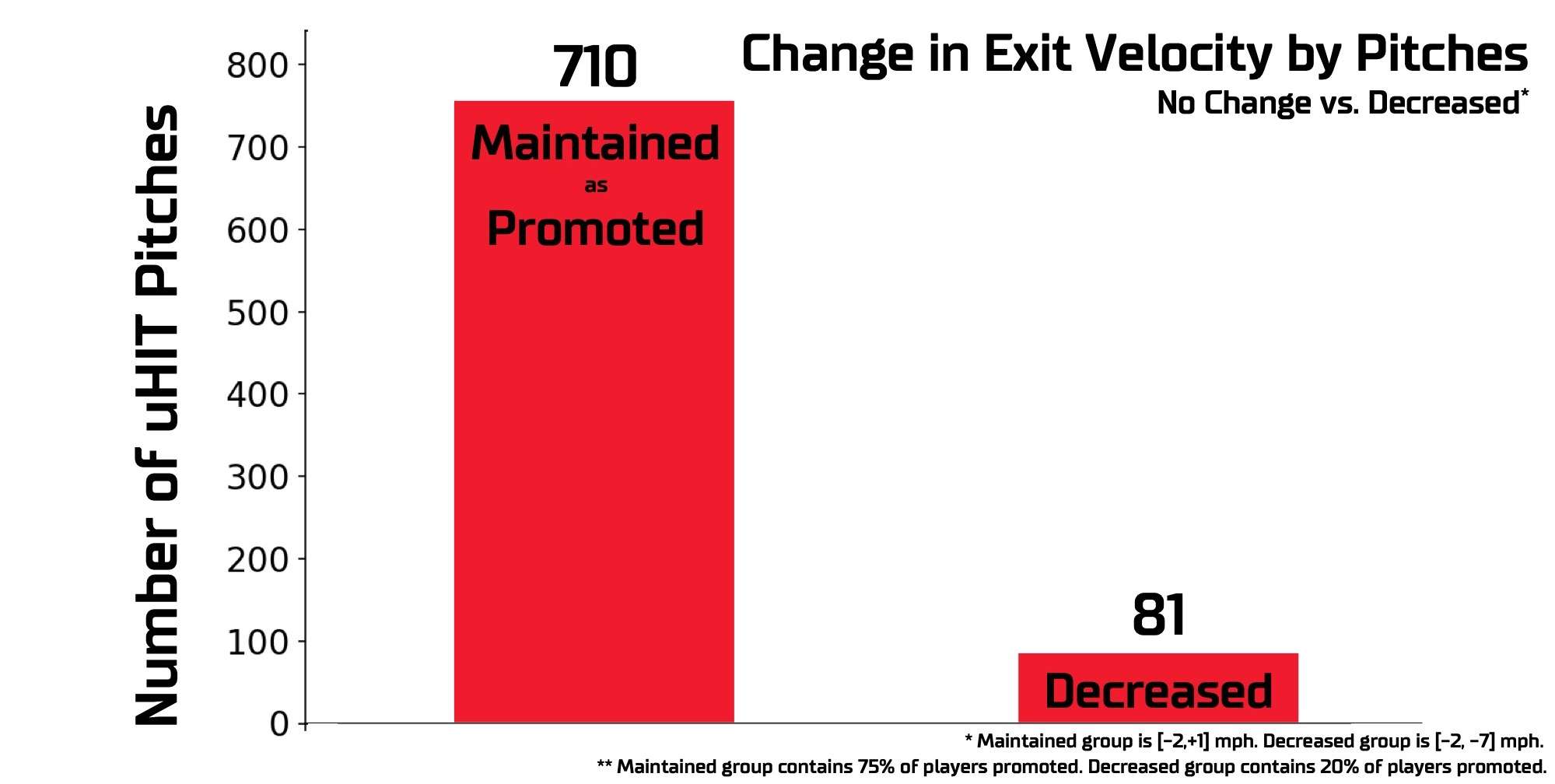Fixing Pro Hitters in 2021
Case Studies from Multiple Levels of an MLB Organization.
Who Made Gains. Who Got Released.
October 26, 2021

Using An App On The Field Is Happening
10 Hitters Were Given The Opportunity With

MLB Organization Players | The uHIT Winners and Losers
In Summer 2021, a MLB organization based in California used uHIT Custom for ten (10) of its players. Unfortunately, confidentiality agreements between deCervo — the maker of uHIT — and the organization do not allow us to identify which team it was. Here, we tell you what happened and how it can apply to your situation, as a coach, a hitter, or as someone in player management (e.g., front office).
This organization prioritized Pitch Recognition for its players so they limited their uHIT Custom work to this skill only (holding Zone Recognition for another time).
-
Pitch Recognition: 1839 Pitches Worked in uHIT
With Assessments done in July 2021, uHIT’s effects over eight (8) weeks could be seen clearly. (Because of confidentiality rules, we will only identify players generically here) John started his uHIT Custom experience with an Assessment of 62% Accuracy and a Reaction Time to the zone of 0.485 sec. As a reference point for these numbers, 100% Accuracy would mean John identified every pitch type perfectly, and either tapped or held a tap when doing so in uHIT. On Reaction Time, an optimal time to the zone from our research shows around 0.430 sec for the Assessment pitch speeds. So looking at John’s numbers, he was well below the Accuracy and above the Reaction Time goals for pitch recognition.
Now, fast forward to the end of August 2021, and after 449 pitches of uHIT Custom Training, John is now pulling an Accuracy of 67% (a +5% change). Most importantly, he is recognizing faster while he is improving his Accuracy in pitch recognition. We can see this from his Reaction Time decreasing from the training to 0.472 sec (a +0.013 sec change).
We can look at more players like John to see their changes from Assessment to later Re-Assessment after Custom Training:
-
Luis: 58% Accuracy to 80% Accuracy (593 pitches)
-
Javy: 46% Accuracy to 61% Accuracy (449 pitches)
-
Evan: 47% Accuracy to 69% Accuracy (237 pitches)
Now that we have looked at the gains made in uHIT, let’s see what happened to the group out on the field.

More Dedication. More Promotion.
This was an area of analysis we had not been able to do before. Usually confined to one level of an organization, we have only been able to look at longitudinal changes in players’ hitting abilities. Now though, we were able to group our players by who got promoted and who got released. For instance, a player going from Low A to High A would be in the “Promoted” group, while a player released or demoted from AA to High A would be in the “Demoted / Released” group.
The writing was on the wall for who got promoted and what their uHIT habits were:
-
Promoted: 598 Pitches Worked On Average In uHIT
-
Demoted / Released: 214 Pitches Worked On Average In uHIT
Why do players hesitate to use an app in their hitting work? We have not cracked that scientific mystery yet.

More uHIT. Less Chasing.
This is a type of analysis we are very familiar with doing at uHIT. Particularly, our uHIT Analysis Service does the number crunching for you to find out how uHIT is directly affecting on-field plate discipline (>>click here to learn more about this service). As we have seen many times before, better performance at uHIT, particularly when guided by uHIT Custom, led to players laying off of bad pitches more often (higher “OZ Take”, the measurement for how often a player does not swing at a pitch out of the zone):
-
Increased OZ Take: 710 Pitches Worked On Average In uHIT Custom
-
Same OZ Take: 81 Pitches Worked On Average In uHIT Custom
This is a simple demonstration of how playing what looks like a “video game” on your phone directly translates to the field. Coaches will tell you it’s the swing, it’s his “head space” and a variety of other things. But the fact is right here — you do uHIT Custom in Pitch Recognition, you lay off of bad pitches because you recognize them sooner and better.

More uHIT. Maintain Exit Velocity.
Now this finding requires a little explanation. What does the graph say? “No Change” and “Decreased”. This is a real-world example of working with professional players who are on the move through an organization. Every time they get promoted, the pitching gets harder to hit. So there is more of a challenge for them to maintain their exit velocity. This is an example of how our uHIT Analysis Service does the number crunching for you to find out how uHIT is directly affecting on-field plate discipline, even when the data may be telling you something unintuitive (>>click here to learn more about this service).
As we have also seen many times before, better performance at uHIT, particularly when guided by uHIT Custom, led to players hitting the ball harder (maintaining Exit Velocity in this case):
-
Maintained Exit Velocity While Promoted: 710 Pitches Worked On Average In uHIT Custom
-
Decreased Exit Velocity: 81 Pitches Worked On Average In uHIT Custom
This is another simple demonstration of how playing what looks like a “video game” on your phone directly translates to the field. Again, don’t think it’s only about your swing mechanics. You can have all the bad speed in the world, but if you are not connecting, the Exit Velocity is zero (0).
Lastly, the keen student of baseball here would notice that the pitches worked on average in uHIT Custom are the same for the Exit Velocity differences and the OZ Take differences. That’s because they were the same players! So you see, players using uHIT Custom both increased OZ Take and maintained Exit Velocity at higher levels of play.
With results like this, how can a pro hitter not use uHIT?
